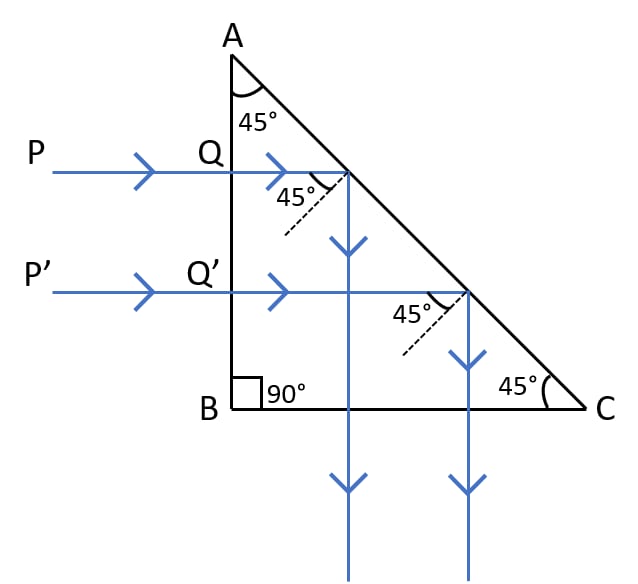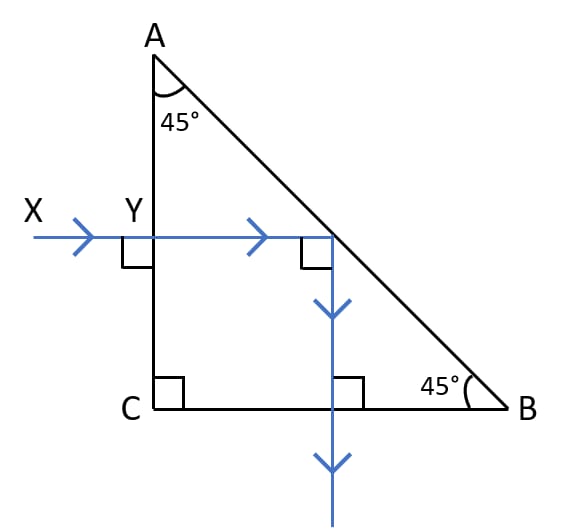Physics
Show with the help of a diagram how a total reflecting prism can be used to turn a ray of light through 90°. Name one instrument in which such a prism is used.
Refraction Plane Surfaces
38 Likes
Answer
Below diagram shows the deviation of a ray of light through 90° by a total reflecting prism:

ABC is a total reflecting prism. A beam of light is incident normally at the face AB. It passes undeviated into the prism and strikes at the face AC making an angle of incidence equal to 45°.
For glass air interface, the critical angle is equal to 42°, therefore the beam of light suffers total internal reflection at the face AC because the angle of incidence is greater than the critical angle.
The reflected beam inside the prism then strikes the face BC, where it is incident normally and therefore passes undeviated. Hence, the incident beam gets deviated through 90°.
This action of prism is used in a periscope where a total reflecting prism is preferred over a plane mirror.
Answered By
24 Likes
Related Questions
A ray of light enters a glass slab ABDC as shown in figure and strikes at the centre O of the circular part AC of the slab. The critical angle of glass is 42°. Complete the path of the ray till it emerges out from the slab. Mark the angles in the diagram wherever necessary.

What is a total reflecting prism? State three actions that it can produce. Draw a diagram to show one such action of the total reflecting prism.
A ray of light XY passes through a right-angled isosceles prism as shown in the adjacent diagram.

(a) What is the angle through which the incident ray deviates and emerges out of the prism?
(b) Name the instrument where this action of prism is put into use.
(c) Which prism surface will behave as a mirror?
Draw a diagram of a right angled isosceles prism which is used to make an inverted image erect.